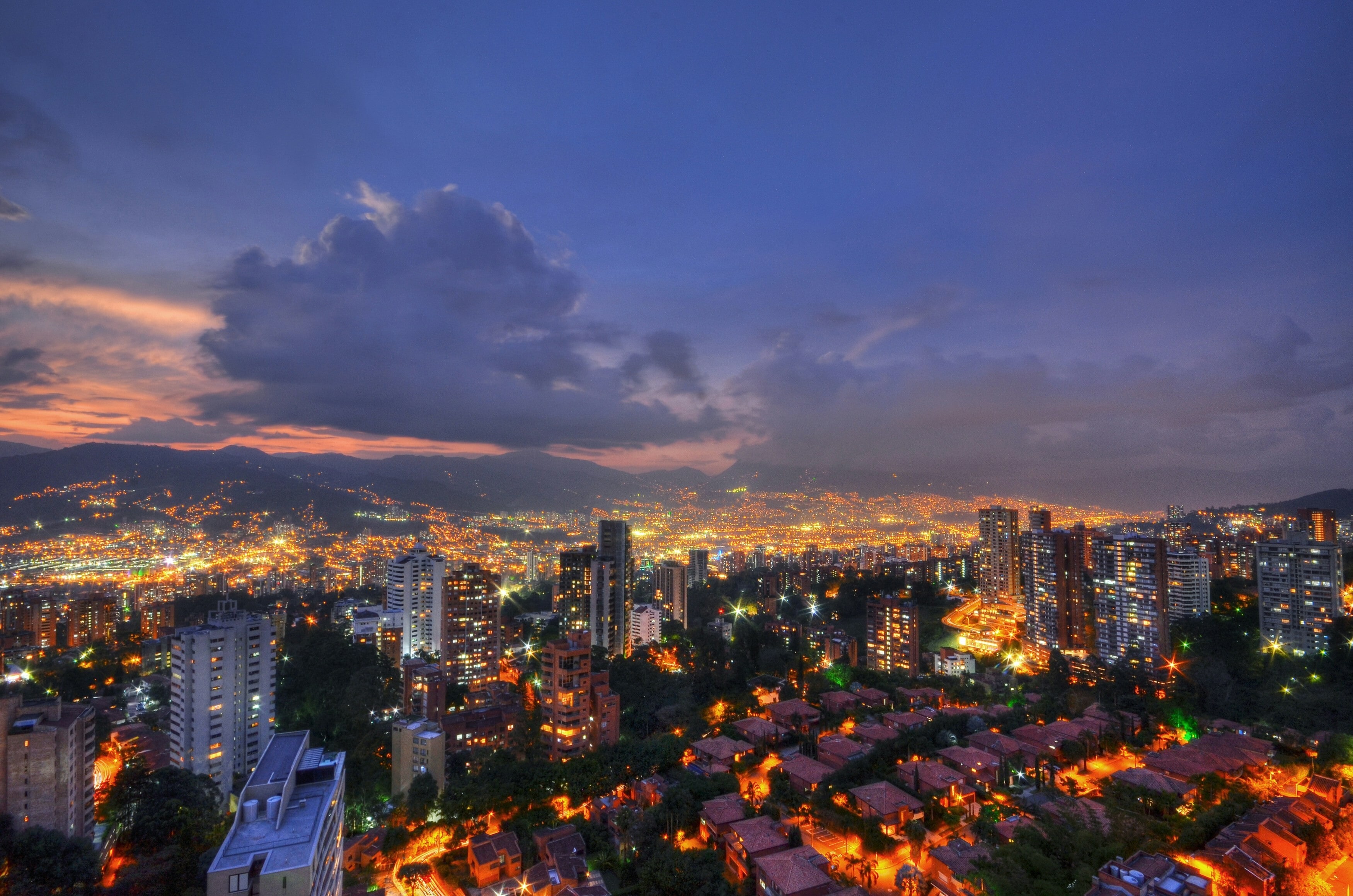How are video games inspiring a new wave of climate action?
Video games are helping to raise awareness about climate change and what action can be taken to stop it.
Image: Unsplash/JESHOOTS.COM
Stay up to date:
SDG 13: Climate Action
- Video games like the United Nations Development Program’s Mission 1.5 mobile game are helping people virtually learn about the climate crisis and participate in climate action.
- Mission 1.5 allows users to communicate climate strategies that have been shared during major international meetings like the G20 summit and COP26 and included in the latest IPCC reports.
- Other games like Alba have also inspired real-world climate action with proceeds funding the planting of 1 million trees and restoration of 3 habitats.
- But the industry still needs to do more to measure its emissions and reduce its carbon footprint.
Sometime before the COVID-19 pandemic, Cassie Flynn was heading to work on a rush-hour packed New York City subway train.
As the Strategic Advisor on Climate Change for the UN Development Programme (UNDP), she often used the monotony of the commute to think of innovative ways to get ordinary people involved in the climate fight, and on this morning, she noticed everyone around her busy with their phones, not just staring at them or scrolling, but doing something.
“I was a bit cheeky, and I started looking at what people were doing and I kind of peeked over this woman’s shoulder and saw she was playing Angry Birds, and then I looked over and this other guy was playing Candy Crush. All of these people were playing games on their phones,” she recalled while speaking to UN News.
A lightbulb went off, and Ms. Flynn thought: “What if we could meet people there?”
“You know how in [some] video games they have these 30-second ads that pop up? What if we could use that? Instead of it being an advertisement for another game or something else, what if this is where we could talk to people about climate change?”
And that’s exactly what she and her team at UNDP decided to do.
Influencing global policy through video games
Ms. Flynn’s momentous subway ride gave birth to UNDP’s Mission 1.5 mobile game, which allows people to learn about the climate crisis and at the same time communicate to governments about solutions that could be put in place to tackle it – all while they’re exploring virtual universes.
“More people play video games on their phones than they [listen to] music and [watch] videos combined, it’s just massive,” says the expert.
Thanks to an inter-agency effort and a partnership with a video gaming company, UNDP’s game – which challenges users to make the right decisions to keep the world on the path to limit global warming to 1.5 degrees –went online at the beginning of 2020.
“Fast forward [to today], we have about 6 million people that have played the game so far in 58 countries, with a 50 per cent completion rate. So, when people start it, they really play it, which is something that we’re really excited about,” Ms. Flynn adds.
But it goes beyond educating the users on climate solutions in 17 languages; the video game asks them to cast a vote about which strategies, in their opinion, would be more successful to tackle the crisis.
These answers have become the source for what is now known as the ‘People’s climate vote,’ the largest survey of public opinion on climate change ever conducted.
“We took data from about 50 countries, and we were able to use the samples to cover over half of the world’s population in terms of their thinking on how they should solve the climate crisis,” Ms. Flynn explains.
That information has now been shared and discussed by parliamentarians all over the world and during major international meetings, such as the recent G20 summit and the latest UN Climate Conference, COP26. The results were even included in the latest series of reports issued by the UN Intergovernmental Panel on Climate Change (IPCC), which are very influential for intergovernmental negotiations.

Reaching new populations: the Playing for the Planet Alliance
Mission 1.5’s success is only the tip of the iceberg if we think about the reach of today’s video gaming industry, which stretches beyond our smartphones onto the screens of at least 3 billion people in the world – or 1 in every 3 people in the planet.
“The video gaming industry is probably the most powerful medium in the world in terms of attention, reach and engagement,” says Sam Barratt, UN Environment’s Chief of Education, Youth & Advocacy.
Mr. Barratt is the Co-Founder of the first-of-its-kind group of private video game sector organizations that have made commitments to help protect people and the planet, with the support of the United Nations.
Launched during the pivotal 2019 UN Climate Action Summit, the Playing for the Planet Alliance has made headlines in recent years for including commitments from some of the major names in the gaming industry, such as Microsoft, Sony and Ubisoft, as well as dozens of other well-known videogame studios.
Mr. Barratt was inspired by watching his son spend time exploring, playing, and socializing on these platforms, and seeing how the games created incentives to keep the players engaged.
“[It was] an industry that hadn’t really thought about what difference it could make”, he explains to UN News.

Less carbon footprint, more action
The alliance aims to work with these companies on two fronts: First, reducing the carbon footprint of their industries; and second, harnessing the power of their platforms to include messages or steps they might take related to climate action.
“We’ve built a really strong community of practice on this agenda. We’ve doubled in size – for now, at least over 40 studios – with more coming on board. The way I see our role [as United Nations] is that we’re facilitating leadership, we’re here to help the industry… but in the end, it’s a voluntary initiative where the kind of leadership that they show is determined by them,” Mr. Barratt explains.
Playing for the Planet also hosts a yearly ‘Green Game Jam’, which is an opportunity for videogame studios to get extra creative and integrate green activations within their popular games or create new ones.
This means including environmentally themed features and messages, educating users and inviting them to donate or to participate in UN conservation and restoration campaigns.

It’s not all fun and games
Over the past two years, there has already been an array of cool initiatives and video games that have made a difference outside of the screens.
For instance, different activations in games during the Jams have contributed to the planting of over 266,000 trees, with this number likely to increase.
Another remarkable example is the popular video game Alba: A Wildlife Adventure by the English studio Ustwo, which is a member of the Alliance.
The game features a girl protagonist who tries to prevent the construction of a resort on a beautiful Mediterranean Island. It teaches the importance of conservation and restoration to PlayStation, Xbox, Nintendo Switch, PC and iOS users, while devoting some of the proceeds from every download to support tree-planting as a strategy to reduce greenhouse gases in the atmosphere.
Alba has so far led to a remarkable 1 million trees planted and 3 habitats restored, with this number set to grow.
During the last Green Game Jam in 2021, UN Environment invited participant studios to support campaigns such as Play4Forests, a petition to demand action from world leaders in protecting forests; and Glowing
Glowing Gone, to accelerate ocean protection and climate action.
Studios with a combined reach of 1 billion players participated in the 2021 Jam, and they were able to engage 130 million players around the world with some 60,000 pledges signed for the UN campaigns, and $800,000 in donations to different charities working with environmental causes.
And of course, it was also fun. Just to give you a few examples:
PAC-MAN players were able to play a forest-themed ‘Adventure Mode’ with six stages, an album filled with collectibles and a skin [a download which changes the appearance of characters in the game] as the reward for the event completion.
Minecraft, a 3-D computer game where players can build anything, added an additional lesson plan on ‘Radical Recycling’ to player maps, and therefore was able to make a $100,000 donation to The Nature Conservancy.
Pokémon Go created a first-of-its-kind avatar item to give players a new way to voice their support for sustainability efforts.
Angry Birds fans were able to collect a special Mariner Hat Set for participating in a Sea Adventure, and the campaign reached over 280,000 people.
Meanwhile, for Anno 1800, a city-building real-time strategy video game, PC players usually grow settlements and create massive production chains in a world with infinite resources. This time, they learned how, in the real world, their decisions affect the environment and could end up destroying it.
Players start out on an untouched island with a small population and are required to create a sustainable city. If they don’t keep in mind the downsides of population growth and find measures to counter them, the island’s ecosystem and the city will ultimately collapse.
For example, building monocultures depletes island fertility, over-fishing destroys food supplies for future generations, and deforestation leads to deserted islands.
This last game initiative won the Jam’s UNEP’s choice award for 2021.

Decarbonizing the video gaming industry
Speaking about change in the real world, according to the latest report of the Playing for the Planet Alliance, 60 per cent of its members are now committed to becoming net zero or carbon negative by 2030 at the latest.
“So, we do know that for many gaming companies, most of the carbon is produced through games that play on devices. Mainly through mobile and all through other parts of that scope. But we still don’t have a full picture. We are working this year to get the whole industry to come up with a methodology so they can understand how they can recall that carbon impact,” Alliance co-founder Sam Barratt, explains.
He adds that while video gaming seems to have a lesser carbon footprint when compared with other leisure activities, it all depends on how long users play and what media they use for it.
“When you’re playing on a CD ROM and playing that game a lot, the carbon consequence of its life cycle approach is less than streaming lots of small games,” Mr. Barratt says, highlighting that the Alliance is working together to figure out ways to measure their emissions better.

How can digital technologies help deliver the climate goals?
Big companies are already starting to take the lead
Last year, Microsoft conducted a report that details the amount of energy in Watt-hours that mobile devices use while playing mobile video games in a 30-minute period of gameplay.
The previous study that was being used for calculation was from 2012, so this new dataset will allow companies to make more accurate calculations of gamers’ energy use through mobile gaming.
Meanwhile, Sony created a carbon footprint tool on the carbon impacts of the gaming sector and made substantial improvements in the energy efficiency of their Play Station 4 and 5 consoles.
“We also recognize the impact we have on climate change as an industry – and we are taking steps to address it... We’ve achieved an estimated avoided energy use for PS4 and PS5 consoles of 57.4 TWh [Terawatt-hour] and 0.8 TWh respectively from energy efficiency improvements we’ve made to date, such as efficient chipsets, power supplies, and low power rest mode,” Ross Townsend, Sony PlayStation Corporate Communication Manager, tells UN News.
He adds that for this year’s Earth Day, Sony Interactive Entertainment invested in high-quality projects and was able to offset carbon emissions equivalent to 100 million hours of average console electricity during gameplay.
Videogames being the biggest entertainment industry, the impact is real: there is a room to lead rather than follow
”Gameloft, a giant mobile game developer, has also made moves to reduce its carbon footprint.
“We have the ambitious project to become Net Zero Carbon with long-term work consisting of focusing on Scopes 1 [direct greenhouse emissions associated with fuel combustion] and 2 [Indirect emissions associated with electricity, steam, cooling etc.] and by reducing our energy and electricity footprint by 80 per cent and onboarding our providers in our decarbonization's journey,” emphasizes Stephanie Cazaux-Moutou, Gameloft Communications Manager.
Since 2019, the company is also reducing its business travel and compensating the remaining emissions.
Other Alliance members are also working on a new protocol to reduce the use of plastics within the industry to be launched sometime in 2022.
“Three quarters of the consumers around the world expect brands to be actively involved in solving social and environmental changes. Videogames being the biggest entertainment industry, the impact is real: there is a room to lead rather than follow,” adds Ms. Cazaux-Moutou.

Into the future of video games for climate action
The 2022 Green Game Jam has included the participation of over 50 studios that have been launching their activations since April, and has a focus on ‘Food, Forests and Our Future’.
Gameloft, for example, integrated into Asphalt 9, a key racing game, the opportunity for players to drive stunning electric cars, including the luxurious Lotus Evija, and race for the planet.
“Gaming is no longer solely for younger generations. Considering the adverse impact climate change will have on communities across the globe, it is important to educate, inspire and engage as many people as possible,” highlights Mr. Townsend from Sony, which is also participating in the latest Jam with their game “Dreams”, inviting users to create Sustainable Farming community games, and planting up to 130,000 real world trees.
Competing videogame companies working and learning together, and collaborating with each other, might have been hard to imagine a few years ago, but today, it is a reality.
Because the truth is, if we don’t come together to end the climate crisis, no one is going to be a winner.
“There’s a real opportunity here to use this for good and to help ignite conversations around some of the world’s challenges that people may want to be engaged with and talk about, but haven't had the opportunity… I think through video games and through the gaming industry, we can reach entirely new populations and help to engage people in new ways that we haven’t been able to before,” highlights UNDP’s Cassie Flynn.
In 2022, Mission 1.5 will launch a new series of questions to include in the game, while the Alliance will be holding several events, including a virtual climate march and a Green Game Jam student edition.
“I think this medium has got unprecedented agency and influence in the world, and it's very young and to some extent maybe misunderstood… we’ve got no choice but to work with this industry because their kind of ability to influence behaviour is potentially exponential,” concludes Mr. Barratt.
Accept our marketing cookies to access this content.
These cookies are currently disabled in your browser.
Don't miss any update on this topic
Create a free account and access your personalized content collection with our latest publications and analyses.
License and Republishing
World Economic Forum articles may be republished in accordance with the Creative Commons Attribution-NonCommercial-NoDerivatives 4.0 International Public License, and in accordance with our Terms of Use.
The views expressed in this article are those of the author alone and not the World Economic Forum.
Forum Stories newsletter
Bringing you weekly curated insights and analysis on the global issues that matter.
More on Climate ActionSee all
Tom Crowfoot
August 12, 2025
Luis Antonio Ramirez Garcia
August 11, 2025
Michael Fröbel and Stanislas Hillen
August 8, 2025
Elizabeth Henderson and Daniel Murphy
August 8, 2025






